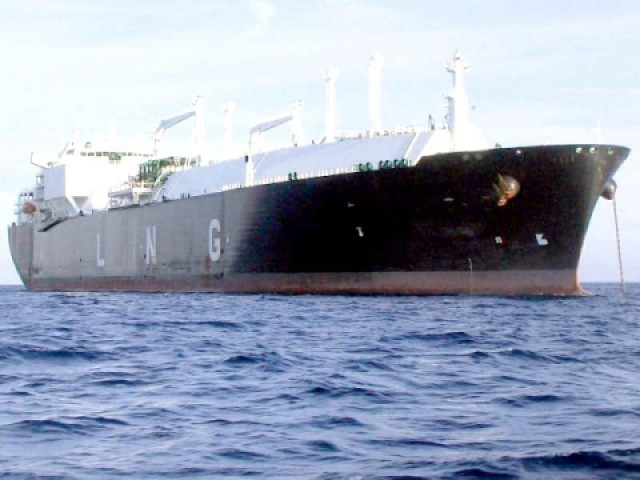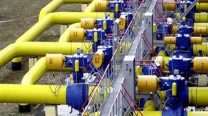Govt plans two more LNG terminals at Port Qasim
Will invite private-sector investors to set up gas handling facilities

The two new terminal projects have entered the implementation phase with capacities of 1 bcfd and 600 million cubic feet per day (mmcfd) respectively. PHOTO: FILE
The Port Qasim, located in Karachi, is already congested and two more LNG terminals may aggravate the problem.
However, the Gwadar port in Balochistan requires an LNG terminal as economic and industrial zones are being developed there under the China-Pakistan Economic Corridor (CPEC) project, which will require uninterrupted energy supply, officials say.
How these zones will be fed energy is a big question as the government has put the LNG terminal plan on the back burner.
Though Balochistan is rich in gas deposits, exploration activities have been quite slow because of poor law and order situation.
Under Article 158 of the Constitution, gas-producing provinces have the first right to consume their energy resources. Keeping this in view, Balochistan may invoke this clause to provide gas for its industrial units, which may halt energy supply to other provinces, particularly Punjab.
In such a case, the federal government would have to shift domestic consumers to the imported gas. At present, industries in Punjab are using imported gas whereas domestic consumers are provided with natural gas produced in the country.
According to sources, the two new terminal projects have entered the implementation phase with capacity of 1 bcfd and 600 million cubic feet per day (mmcfd) respectively. These are being developed by two different consortia that comprise Shell Pakistan, Qatar Petroleum, ExxonMobil, Total, Mitsubishi, Hoegh & Co, GEI, Engro Corporation and Fatima Group.
Engro has already set up Pakistan’s first LNG terminal at Port Qasim and has been handling LNG imports from Qatar since 2015. Qatar Petroleum is going to enter into partnership in setting up another LNG terminal at the port.
Owing to the fast widening gap between demand and supply of energy in the country, the government is pursuing LNG import plans.
It has been injecting 600 mmcfd of imported gas into the system since February 2017, which is being consumed by power, fertiliser and cement plants, general industry and compressed natural gas (CNG) filling stations. The second LNG terminal with handling capacity of 600 mmcfd is currently being developed and it will be commissioned in August this year. Two additional LNG terminals, also planned to be built at Port Qasim, are expected to be commissioned in the second and third quarters of 2018.
Public gas utilities have asked the government to allow Rs175-billion borrowing from commercial banks for laying a third pipeline from Karachi to Lahore that will transmit 1.2 bcfd of imported gas.
These utilities are already working on a pipeline augmentation project in a bid to enhance the capacity of their networks to carry 1.2 bcfd of LNG for energy-starved consumers.
According to an official, the Ministry of Petroleum and Natural Resources, as an alternative, is seeking allocation of Rs175 billion for the utilities from the gas infrastructure development cess (GIDC) collection for building the Karachi-Lahore pipeline.
Published in The Express Tribune, July 30th, 2017.
Like Business on Facebook, follow @TribuneBiz on Twitter to stay informed and join in the conversation.



















COMMENTS
Comments are moderated and generally will be posted if they are on-topic and not abusive.
For more information, please see our Comments FAQ